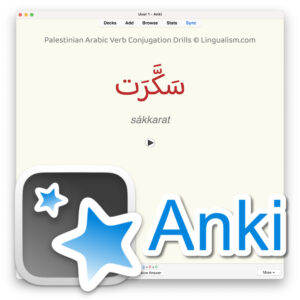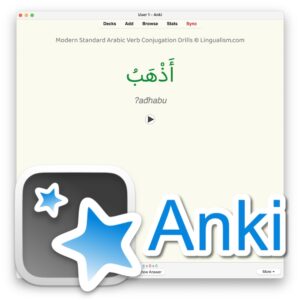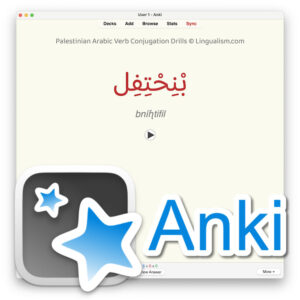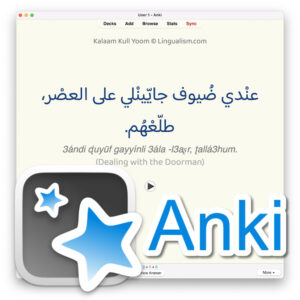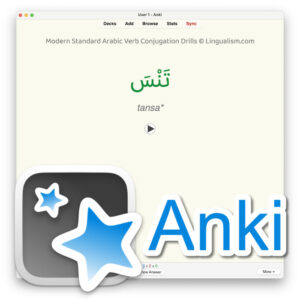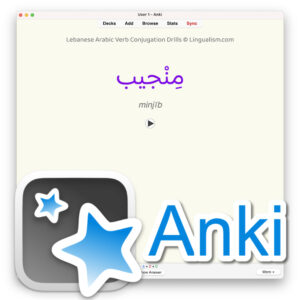Table of Contents
Egyptian Arabic
Introduction
Egyptian Arabic is a captivating choice if you’re a language enthusiast seeking to expand your horizons. This vibrant dialect isn’t just a mode of communication; it’s a cultural treasure trove that offers deep insights into the Arab world. Egyptian Arabic holds immense importance due to its widespread understanding across the Middle East and North Africa (MENA) region.
This blog post will explore what makes Egyptian Arabic unique, provide a historical context, and offer practical tips for learning it. By the end, you’ll understand why this dialect is worth your time and effort.
What is Egyptian Arabic?
Egyptian Arabic, also known as Egyptian Colloquial Arabic (or “Masri” by natives), is the spoken dialect of Arabic used primarily in Egypt. It’s distinct from Modern Standard Arabic (MSA), the formal version of Arabic used in writing and formal speech. While MSA is uniform across the Arab world, Egyptian Arabic has its own unique features.
Geographically, Egyptian Arabic is spoken by over 100 million people in Egypt. However, its influence extends far beyond Egypt’s borders. Thanks to Egyptian media’s prominence, this dialect is understood by millions of Arabic speakers globally.
Linguistically, Egyptian Arabic boasts unique phonetics, vocabulary, and syntax. For example, it has a distinctive pronunciation of the letter “qaf” (ق) as a glottal stop, differing from other dialects. Its vocabulary includes words borrowed from ancient Egyptian, Coptic, and foreign languages, making it a fascinating study in linguistic evolution.
Historical Background
The roots of Egyptian Arabic stretch back centuries. Its evolution has been influenced by various languages and cultures, starting from ancient Egyptian and Coptic. Over time, it absorbed words and phrases from French, Italian, Turkish, and other languages due to Egypt’s historical interactions with these cultures.
During the Pharaonic era, Egyptian was the dominant language. With the advent of the Greco-Roman period, Greek and Latin influences seeped into the local vernacular. The Islamic conquest introduced Arabic, which gradually replaced Coptic as the primary language.
The Ottoman period brought Turkish influences, further enriching the language. In modern times, English and French have also left their mark, reflecting Egypt’s colonial history and ongoing global interactions.
Examples of words borrowed from these languages can be found in modern, everyday Egyptian Arabic. From French, the word “بلكونة” (balakoona) meaning “balcony” is commonly used. Turkish has contributed words like “أوضة” (ooda), meaning “room.” Italian influences include “بنطلون” (banTaloon), which translates to “trousers.” English has also made its mark with terms such as “تليفون” (tilifoon), meaning “telephone.” These borrowed words enrich the lexicon of Egyptian Arabic, demonstrating the language’s dynamic nature and its ability to incorporate elements from a wide array of cultures.
Cultural Significance
Egyptian Arabic plays a pivotal role in Egyptian media, including TV shows, movies, and music. Icons like Umm Kulthum and contemporary artists have popularized the dialect through their work, making it a staple in Arab pop culture. The reach of Egyptian cinema and television has turned Egyptian Arabic into a lingua franca of sorts within the Arab world.
In literature and poetry, Egyptian Arabic adds a layer of authenticity and relatability. Authors and poets use it to convey the nuances of everyday life, making their work resonate deeply with readers.
In the realm of theatre, Egyptian Arabic has found its voice through influential playwrights and actors. Since the early 20th century, the theatre scene in Egypt has thrived, with Egyptian Arabic being the primary medium of communication on stage. This has allowed for powerful storytelling that reflects the societal and cultural dynamics of the time. Comedic plays, tragedies, and social satires often utilize the dialect to connect deeply with the audience, delivering entertaining and thought-provoking performances.
Furthermore, Egyptian Arabic is at the forefront of social media and digital communications among Egyptians. Platforms like Facebook, Twitter, and YouTube are rife with content in Egyptian Arabic, from memes and viral videos to educational content and political commentary. The dialect’s informal nature makes it perfect for these platforms, where quick, relatable, and impactful communication is essential.
In the educational sphere, while Modern Standard Arabic remains the official language of instruction, Egyptian Arabic is often used in classrooms to explain complex concepts and foster a more engaging learning environment. This bilingual approach helps bridge the gap between formal education and everyday understanding, ensuring that students can easily grasp and apply what they learn in their daily lives.
Learning Egyptian Arabic
Why Learn Egyptian Arabic?
Learning Egyptian Arabic offers several compelling benefits. First and foremost, it is by far the most spoken Arabic dialect, making it a valuable tool for communication across Arabic-speaking countries. Widely understood across the MENA region, Egyptian Arabic owes much of its prevalence to Egypt’s influential media, including movies, television shows, and music that have reached audiences far beyond its borders.
Additionally, mastering this dialect can serve as a gateway to understanding other Arabic dialects, given its widespread recognition and similarity to modern standard Arabic. For travelers, expatriates, and anyone interested in Middle Eastern studies, Egyptian Arabic proves to be incredibly practical. It opens doors to richer cultural experiences, better social interactions, and a deeper understanding of the region’s history and contemporary issues. In essence, the benefits of learning Egyptian Arabic extend well beyond mere language proficiency, offering a robust foundation for broader engagement with the Arab world.
Basic Features for Learners
Pronunciation Guide
One of the first steps in learning Egyptian Arabic is mastering its pronunciation. Unlike MSA, Egyptian Arabic has specific sounds unique to the dialect. For instance, the letter “ج” is pronounced as “g” instead of the “j” sound in other dialects.
Common Phrases and Expressions
Familiarizing oneself with common phrases and expressions is essential for effective communication in Egyptian Arabic. Here are some useful phrases to get you started:
- “ahlan wi sahlan” (أهلاً و سهلاً) – A warm greeting equivalent to “Welcome.”
- “SabaaH ilxeer” (صباح الخير) – “Good morning.”
- “Masaa2 il-xeer” (مساء الخير) – “Good evening.”
- “shukran” (شكراً) – “Thank you.”
- “lazim amshi” (لازم أمشي) – “I have to go.”
These phrases are commonly used in daily interactions and reflect the politeness and social etiquette inherent in Egyptian culture. Mastering them provides a strong foundation for more immersive and meaningful conversations.
Basic Grammar
Understanding the fundamental grammar rules of Egyptian Arabic simplifies the learning process significantly. Unlike MSA, which follows a more rigid grammatical structure, Egyptian Arabic tends to be more flexible and colloquial. Here are a few key points:
- Verb Conjugation: Verbs in Egyptian Arabic are usually conjugated differently depending on the tense and the subject. For example, “I eat” is “ana baakul” (أنا بأكل), while “I ate” is “ana akalt” (أنا أكلت).
- Sentence Structure: The standard sentence structure typically follows the Subject-Verb-Object (SVO) format. For instance, “He speaks English” would be “huwwa biykallim ingliizi” (هو بيكلم إنجليزي).
By grasping these basics, learners can quickly start forming simple sentences and carrying out basic conversations.
Learning Resources
While learning resources for MSA are abundant, those for Egyptian Arabic can be limited. However, platforms like ours aim to fill this gap by offering quality materials tailored to spoken Egyptian Arabic. Our eBooks and digital Anki flashcards make learning more accessible and enjoyable.
Practical Tips for Learners
Practice Regularly with Native Speakers
Engaging with native speakers is one of the most effective ways to learn a language. Whether it’s through language exchange programs or online communities, regular practice helps reinforce what you’ve learned and improves fluency.
Join Language Exchange Communities
Communities like Tandem and HelloTalk offer platforms where you can connect with native Egyptian Arabic speakers. These exchanges provide real-world practice and cultural insights that enrich your learning experience.
Use Social Media and Online Forums
Platforms like Facebook, Reddit, and Instagram have groups and pages dedicated to Egyptian Arabic learners. Engaging with native content, participating in discussions, and asking questions can accelerate learning.
Find an Online Teacher
Consider hiring an online tutor who specializes in Egyptian Arabic. Websites like iTalki and Preply offer personalized lessons that cater to your learning pace and goals.
Study Independently with Quality Resources
Utilize resources from Lingualism to study independently. These resources offer a wide range of tools designed to enhance your language learning experience, from dictionaries, vocabulary and grammar references to readers and books to practice speaking and listening. Consistent self-study not only complements other learning methods like classroom instruction or language exchange but also ensures steady progress by reinforcing what you’ve learned. Taking the initiative to study on your own can lead to a deeper understanding and greater proficiency in your target language over time.
Conclusion
Egyptian Arabic is more than just a dialect; it’s a cultural passport that opens doors to a vibrant world. Its widespread understanding, historical depth, and cultural significance make it a valuable addition to any language learner’s repertoire.
By immersing yourself in the language through regular practice, engaging with native speakers, and utilizing quality resources, you’ll master Egyptian Arabic in no time. We encourage you to share your learning experiences and favorite resources in the comments section below. Happy learning!


